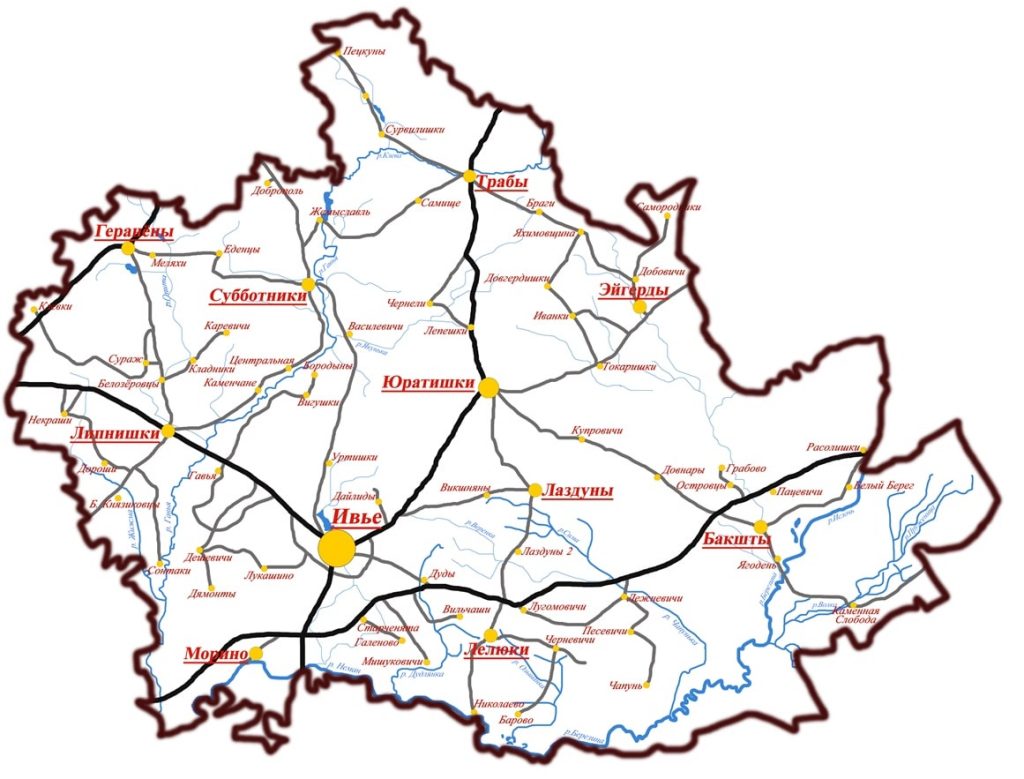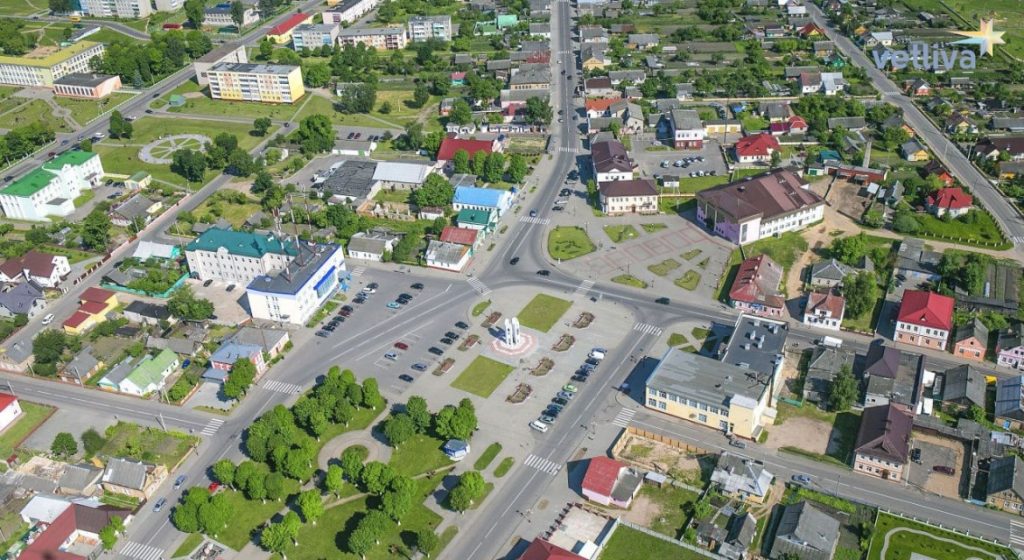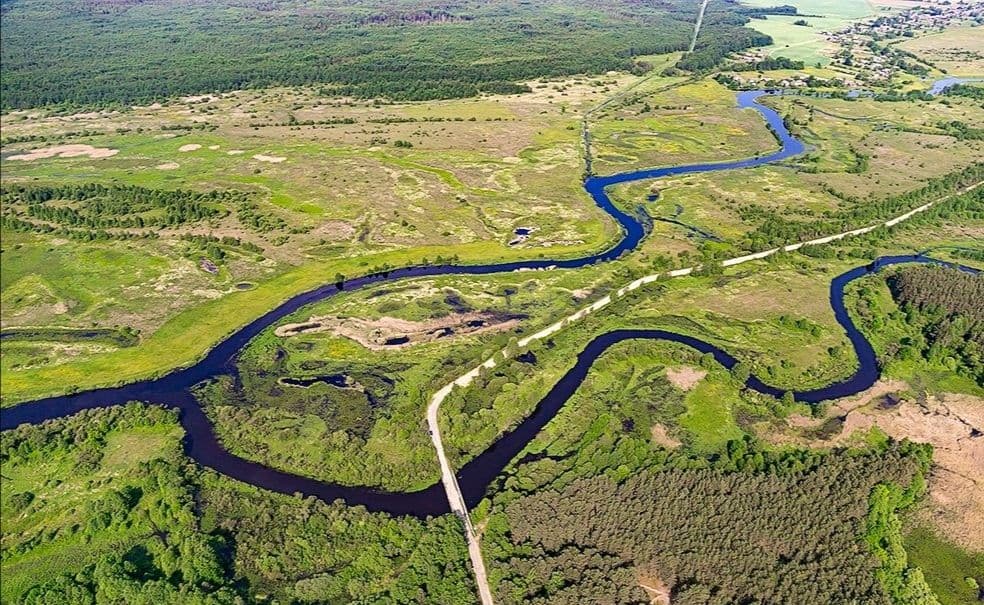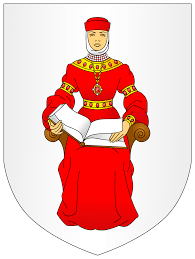
About the area
Ivye district is located in the north-eastern part of the Grodno region. It borders on the Republic of Lithuania, Oshmyanу, Lida, Novogrudok and Voronovo districts of Grodno region, Volozhin and Stolbtsy districts of Minsk region. The district was founded on January 15, 1940. The area of the district is 1841 sq. Km. 21,900 people live in 372 settlements. According to the ethnic composition, live: 66.5% of Belarusians, 28.5% of Poles, 2.9% of Russians, 1.5% of Tatars, 0.9% of other nationalities. The center of the district is the city of Ivie. The regional center is located 131 km from Minsk and 158 km from Grodno. Ivye district includes 10 village councils.
The Grodno-Molodechno railway crosses the region from west to east. There are railway stations Gavia and Yuratishki. The territory of the district is covered by a network of highways of republican significance: Minsk – Grodno, Baranovichi – Novogrudok – Ivye, Vorona – Oshmyany – Yuratishki – Ivye, Ivye – Trokeli – Voronovo. The motor road M6 Minsk – Grodno is the road with the most intensive traffic and developed infrastructure of roadside services.On the territory of the district there are 2 points of the simplified pass in the village of Geranyony and the village of Petskuny. 50 settlements of the Ivye region were exposed to radionuclide contamination and belong to the area of residence with periodic radiation monitoring


Ivye is one of the youngest cities in the Grodno region, the name was given to it by a woman, as the legend says. Princess Eva, the wife of Prince Gediminas, chose these places on the way from Vilna to Novogrudok. At her will, a castle was erected, around which the settlement grew.Another legend is no less beautiful: Ivye settlement was named because the nature in the area is replete with many willows. And indeed it is. Beauties – willows still grow on the banks of Ivyanka.The city’s coat of arms is based on the first of the legends. The symbol depicts a noble lady in princely attire with an open book in her hands. This is not just Princess Eva. For centuries, Ivye has been lucky to have female owners who have done a lot for his well-being and education. Their collective image became the symbol of the city.The ancient settlement, the first mention of which dates back to 1394, acquired the status of a city only in January 2000.Who else did not own Ivye, which was a tasty morsel for numerous representatives of the nobility! It was owned by the Radziwills, Kishki, Sapegi, Oginsky, Tyzenhaus, Zamoysky. It was part of the Principality of Polotsk, the Grand Duchy of Lithuania, the Commonwealth, Tsarist Russia, Poland ..


One of the most obvious reasons for the popularity of Ivye is its convenient location between Vilnia and Novogrudok. Two trade routes went through Ivye from north to south.Today, a favorable geographical position gives the region a developed network of highways of republican importance and railways.Ivye fame in the 16th century was brought about by the Arian school founded by Jan Kiszka in 1585. This educational institution went down in the history of education in Belarus under the name Ivye Arian Academy. Its rector was a like-minded person of Symon Budny, a progressive thinker – humanist, teacher and poet Yan Litsyniy Namyslovsky.After the closure of the Ivye Academy, thanks to the established educational traditions, one of the first printing houses in Belarus was founded. It is believed that Melety Smotritsky’s “Grammar” was also printed in 1619 in the Ivye printing house.Ivye is called “little Jerusalem”, “the capital of the Belarusian Tatars”, a place that inherited a rich layer of history and culture. Here, in Ivye, East and West meet on the Belarusian land. It is here, over the course of many centuries, that the history of Belarusians, Poles, Russians, Jews, Tatars was formed and fancifully intertwined. It is in Ivye that faiths meet and intersect: Islam, Judaism, Christianity (Orthodoxy, Catholicism, Protestantism).
